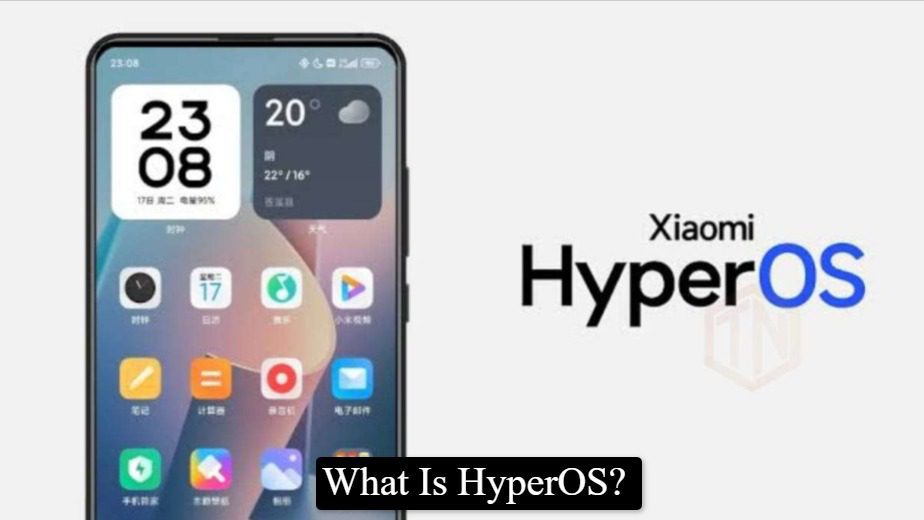At a time when seamless technology integration into daily life is more of a necessity than luxury, Xiaomi’s unveiling of HyperOS marks an impressive milestone. Aimed at revolutionising interactions among humans, their environment, and technology, HyperOS presents itself as a cutting-edge operating system. It promises to revolutionize the smart ecosystem encompassing individuals, their homes, and even their vehicles. Let’s dive into the essence of HyperOS, exploring its core principles, standout features, and the devices set to experience this technological evolution.
HyperOS: A Paradigm of Smart Ecosystem Integration
- Crafting a Unified Experience: HyperOS is conceived to harmonize the digital dialogue between various devices within the Xiaomi ecosystem. By focusing on a smart ecosystem that includes people, homes, and vehicles, HyperOS seeks to enhance the quality of life through technology. Its design is rooted in the principle of complete refactoring to maximize hardware capabilities, ensuring devices deliver peak performance, quick task scheduling, and engage in efficient distributed computing.
- Technical Excellence and Alive Design Philosophy: The backbone of HyperOS is its ability to provide continuous performance through an ultra-lightweight file system, minimizing storage use while maximizing efficiency. It supports superior OTA upgrades and boasts extensive compatibility across different file systems and processors. With its Alive Design Philosophy, HyperOS brings to the fore fluid, comfortable, and diverse graphics, redefining user interaction with dynamic visuals and high-quality rendering.
HyperOS is an emblem of Xiaomi’s dedication to innovation, emphasizing user-centered smart ecosystem. Xiaomi’s introduction of HyperOS marks an ambitious effort toward streamlining modern tech devices so as to enhance human experiences while remaining simple for everyday consumers.
Distinguishing HyperOS from MIUI
HyperOS represents a significant departure from Xiaomi’s MIUI, embracing a foundation built on both the Android Open Source Project (AOSP) and Xiaomi’s Vela system. This evolution from MIUI to HyperOS introduces several key differences:
- Independence from Google’s Constraints: Unlike MIUI, which relies heavily on Google’s Android, HyperOS’s foundation allows Xiaomi greater autonomy in feature selection and device compatibility. This independence is crucial for optimizing performance across devices with varied RAM sizes and for integrating innovative features unrestricted by Google’s ecosystem.
- Enhanced Performance and Ecosystem Compatibility: HyperOS, based on Android 14, is engineered for improved boot times, smoother operations, and compatibility with an extensive range of devices within the Xiaomi ecosystem, from smartphones to smartwatches and TVs. This compatibility ensures a consistent and optimized user experience across all devices.
The transition to HyperOS from MIUI signifies Xiaomi’s ambition to forge a path that prioritizes flexibility, performance, and a harmonious device ecosystem, setting a new standard for operating systems in the IoT and smart device market.
HyperOS: Innovation at Its Core
HyperOS is not merely an upgrade; it’s a reimagining of the operating system with an array of innovative features:
- User Interface and Experience: HyperOS refines the user interface with fewer pre-installed apps and streamlined animations, providing a clutter-free and sophisticated experience. It introduces advanced customization options, enhancing usability and personalization.
- Performance and Efficiency: With significant improvements in storage efficiency and RAM management, HyperOS ensures that devices operate smoothly, apps remain active longer, and system resources are utilized more effectively.
- AI-Driven Enhancements: Integrating advanced AI technologies, HyperOS offers smart features like AI-enhanced text recognition, intelligent image search, and superior speech generation, pushing the boundaries of what smart devices can achieve.
HyperOS is set to transform smart ecosystems, connecting devices to users seamlessly through innovative technology and design. With HyperOS’ debut comes an exciting era of interconnection, promising enhanced, intuitive user experiences.
The Future with HyperOS
Xiaomi and Redmi devices set to receive HyperOS updates by 2024 look promising, offering the potential of seamless technology integration that’s more user-focused and efficient. Xiaomi continues its roll out of HyperOS so users can anticipate living in an innovative world where technology adapts perfectly to human needs, creating an ideal balance between life and tech!





